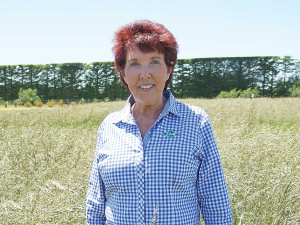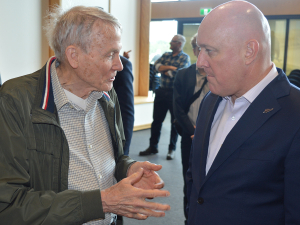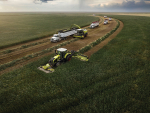Alternative tools are increasingly available for growers looking to reduce their reliance on agrichemicals in response to market and resistance challenges, says Foundation for Arable Research chief executive Alison Stewart.
Many of these, including biologicals and digital decision-support tools, were outlined at a FAR-organised series of events titled: “A Lighter Touch: a new approach to crop protection”.
The $27 million, seven-year “A Lighter Touch” (ALT) programme was established in 2020 to develop and promote arable and horticultural pest management options which reduce reliance on synthetic chemistry. It is jointly funded by government and industry.
Stewart says FAR has had a crop protection research programme centred around the use of agrichemicals since its inception almost 30 years ago “but we will not necessarily have that luxury into the future”.
“The challenge is how do we take our intensive arable agrichemical system and transition that to something that has a ‘A Lighter Touch’.”
While agrichemicals are critical to management of pests and diseases in arable production systems, their use and availability is being challenged by increasing consumer pressure, the build-up of resistance to existing agrichemicals and a reduction in new chemistry being registered in New Zealand.
ALT industry stakeholder advisory group chairman Dr Stuart Davis told the Ashburton event that an impetus for the programme is the rapidly growing availability of biological products which will assist growers to transition into softer chemistry.
While new synthetic chemistry can cost US$300 million and 11 years to develop for market, biologicals can be available in less than five years at a development cost of around US$5m.
“In the US, it is predicted that the biologicals market could be as big as agrichemicals in 20 years at current annual growth rates.”
Already in the US, about 70% of biologicals are sold to conventional farmers.
In New Zealand, delays in getting approval for new products is causing frustration and the regulatory process is currently being reviewed by government. “Biologicals need to be assessed and approved faster than they are now,” Davis says.
FAR senior cereals researcher Jo Drummond says that while attracting premiums for using less and softer chemistry may be easier in sectors like horticulture or wine, for arable it may be more about market access.
Crop protection practices for present and future include biological control, plant breeding and use of resistant cultivars, mechanical practices, precision agriculture and digital support and monitoring, as well as plant protection products.
“We still need agrichemicals. Ultimately our goal is to maintain the effective life of these products,” Drummond says.
“There is no option now but to layer up these strategies that can help growers successfully reduce their input costs and maintain or potentially increase profitability and yield.”
As a first step, growers need to pick a resistant cultivar.
They also need to consider, understand and prioritise agrichemical application timings to reduce costs and protect existing chemistry.
“Do your homework on biopesticides and biological products and be realistic. You can’t just switch one product for another.”
Decision support tools such as FAR’s online Aphid Chat are also available to assist with treatment timings, Jo Drummond says.
Visiting United Kingdom plant pathologist Dr Aoife O’Driscoll told the ALT events that increasing fungicide resistance, combined with rapidly rising fungicide costs is driving UK cereal growers to change their crop management.


















